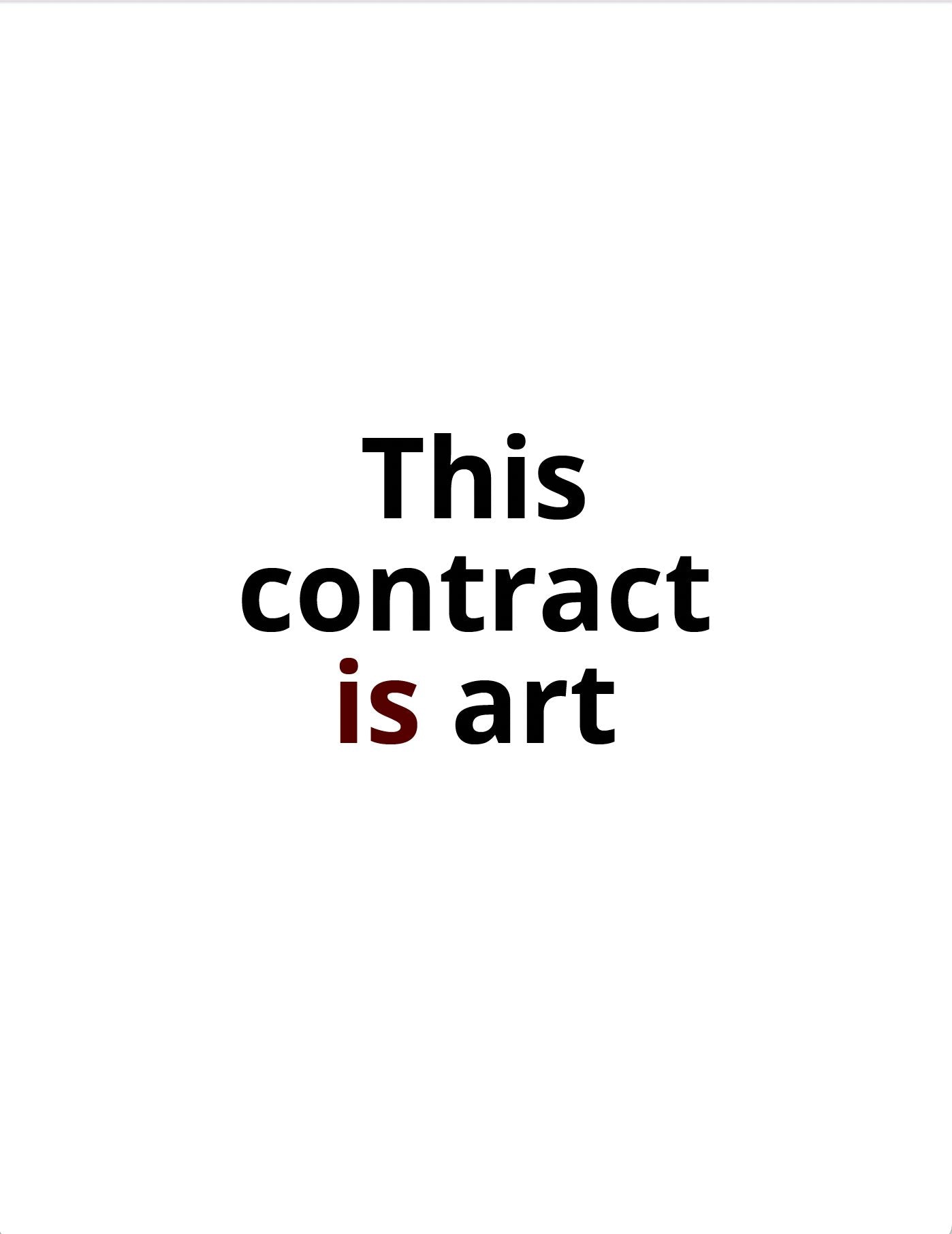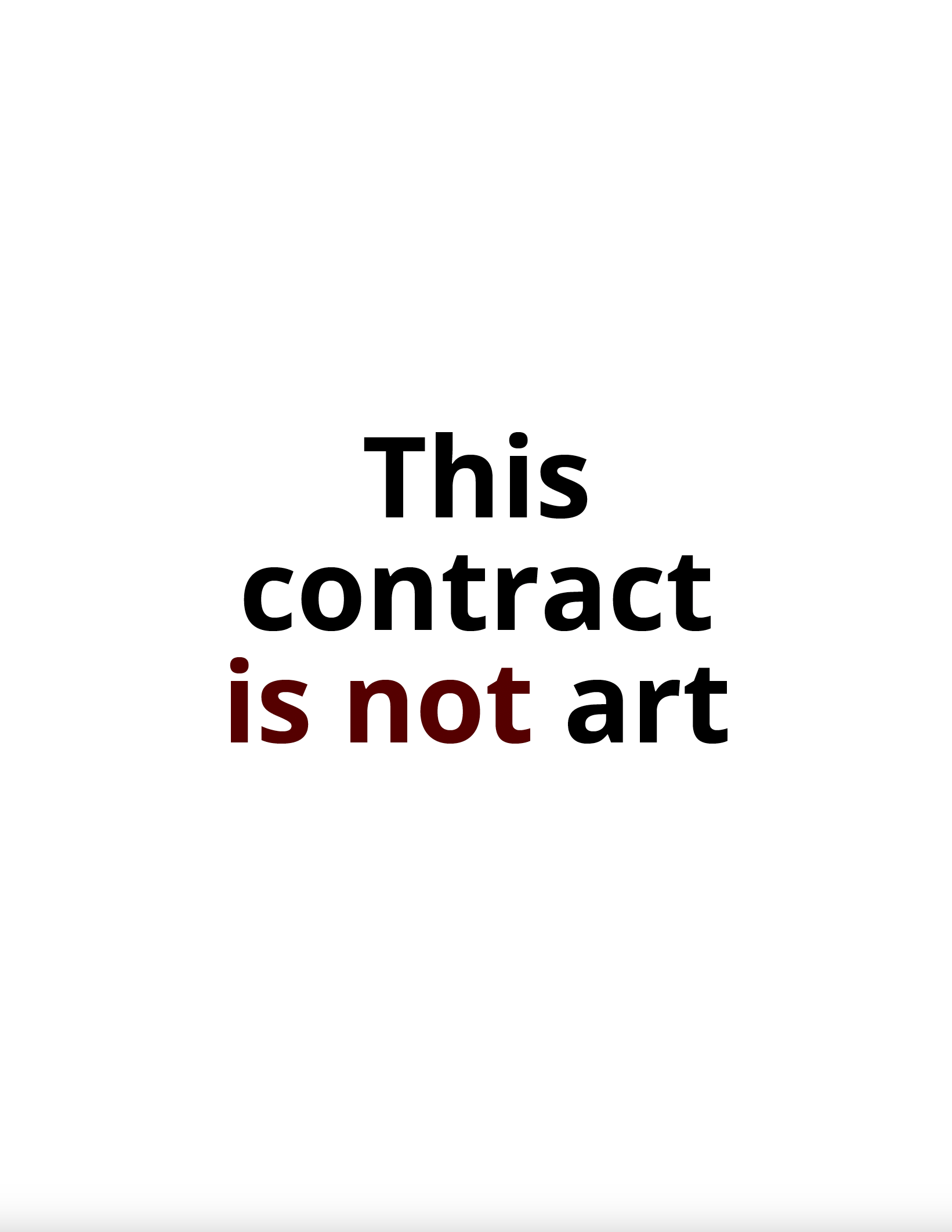Is Art, 2014/15
Ethereum DApp
Courtesy of Gazelli Art House Ltd.
Copyright The Artist
About The Artwork
Is Art takes the Conceptual Art ideas of dematerialisation (art that is not presented in a fixed physical form) and nomination (something that is art because someone or something says it is) and combines them with the net.art idea of the interactive artwork that exists in or interferes with network protocols.
It is the first in a series of artworks that combined increasingly complex data, aesthetic properties, and governance schemes in order to place the claims being made for the liberatory power of the blockchain and the descriptive power of art history into mutual critique. Here the simplest possible piece of information, a single bit, represents the act of nominating something as art. It does so in response to anyone who can access the blockchain sending a transaction in order to do so.
Nominating something as an artwork requires the artist’s authority to be sufficient to make the nominated object be regarded as art. Replacing that authority with the security of the blockchain, which is enforced using a sizable fraction of the Earth’s computing power, transforms a qualitative gesture into a quantitative one. Opening up the act of nomination to anyone with the means to perform it democratises it, although it is a democracy limited to those with the means to access the Ethereum blockchain.
Is this sufficient to determine whether the contract is or is not art? Where and how is the claim really being made and determined? Who by, and who for? How does this relate to historical examples of such artworks? And how does it relate to other claims of fact stored in other smart contracts on the blockchain?
About Rhea Myers
Rhea Myers is an artist, hacker, and writer. She skillfully intertwines technology and culture, prompting them to question and interact with each other. The driving force behind Myers' artistic endeavours is her desire to comprehend the changing world that surrounds her. Since 2014, her focus has been on producing art centred around the concept of the blockchain. As a medium, the blockchain serves both as a reflection of and an alternative to the societal landscape following the financial crisis of 2008. Myers views the blockchain as a subject that resonates uniquely, embodying the centuries-old cryptographic imagery deeply rooted in Western political thought. Myers' exploration of the blockchain as a subject for artmaking began with the creation of raw transactions, simulating intangible forms. Over time, her artistic journey led her to delve into crafting smart contracts and subsequently ERC-721 tokens. These ERC-721 tokens, in particular, create forms of property and control infused with a sense of irony. Throughout this artistic evolution, Myers' focus shifted increasingly towards the emotions tied to ownership anxiety that the concept of blockchain property evokes. From the UK and currently residing in British Columbia, Canada, Myers has exhibited internationally at venues including: ArtScience Museum, Singapore; Kunsthalle, Zürich; Sotheby’s, London; Chronus Art Centre, Shanghai; CADAF, New York; Jerwood Visual Arts, London.





